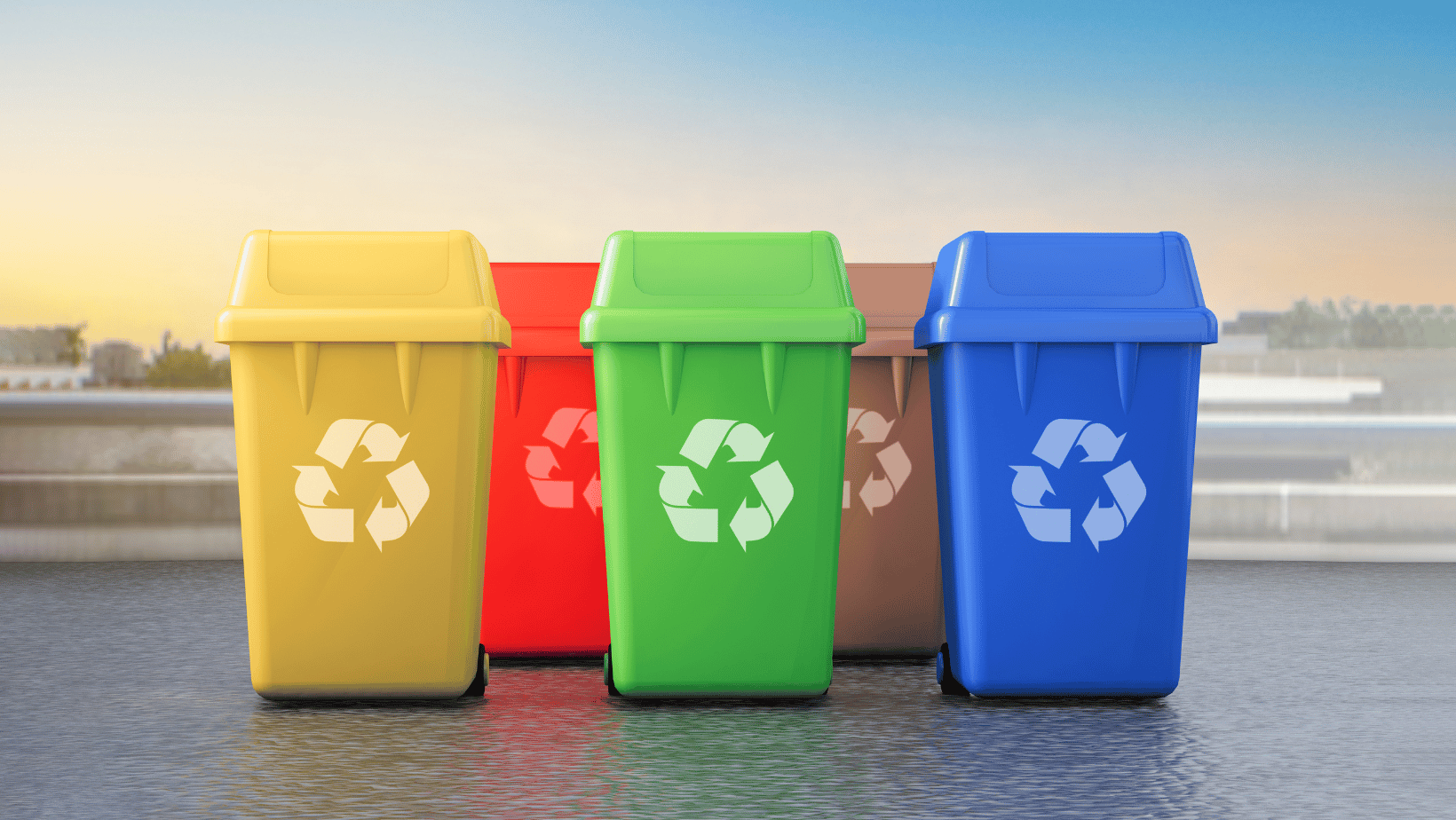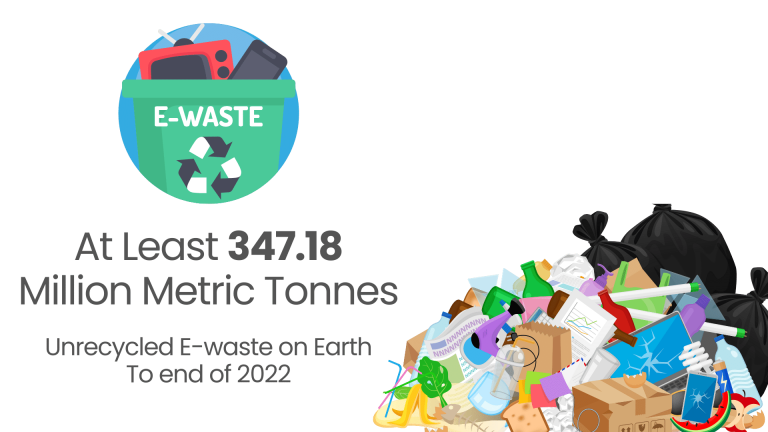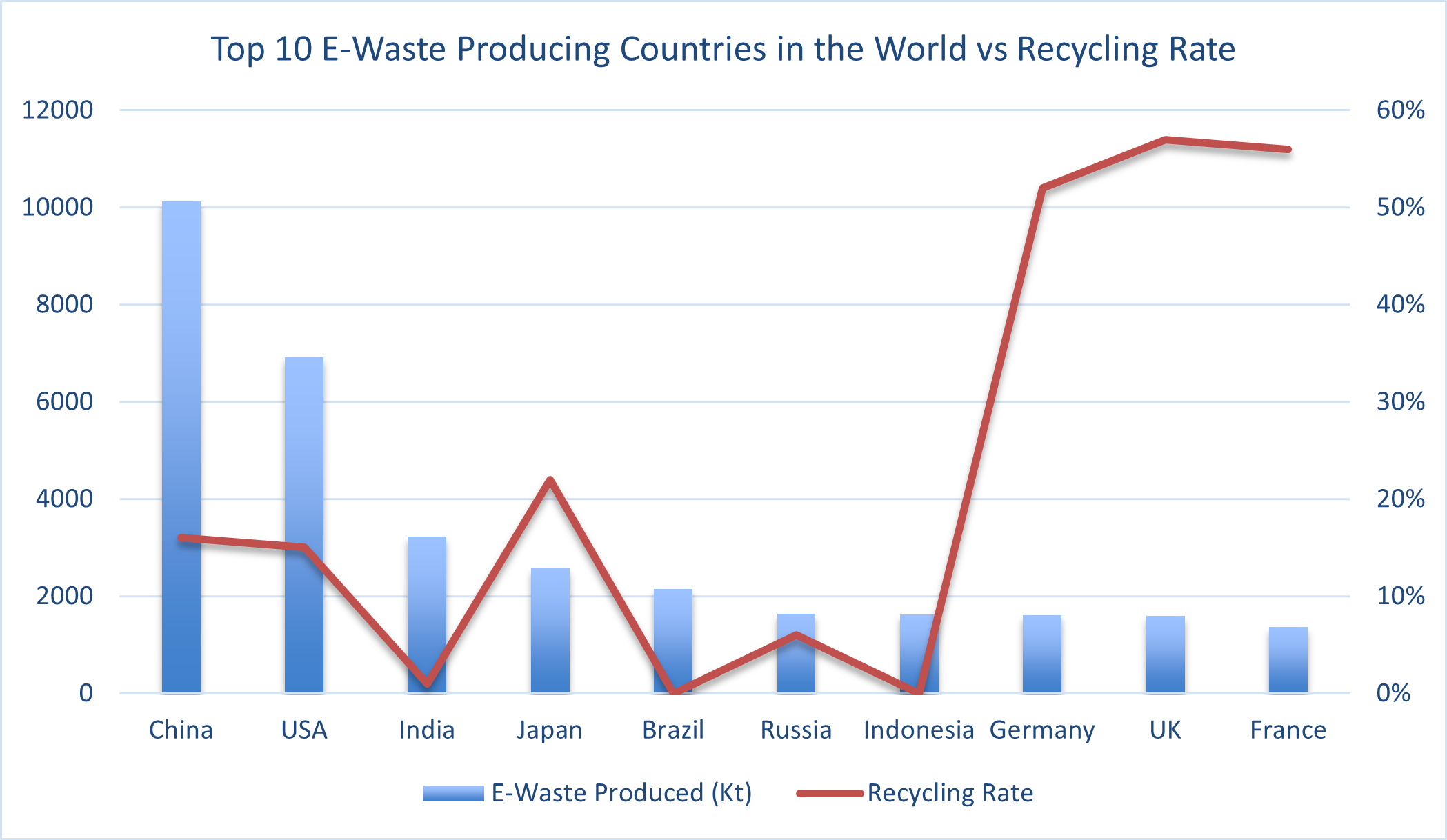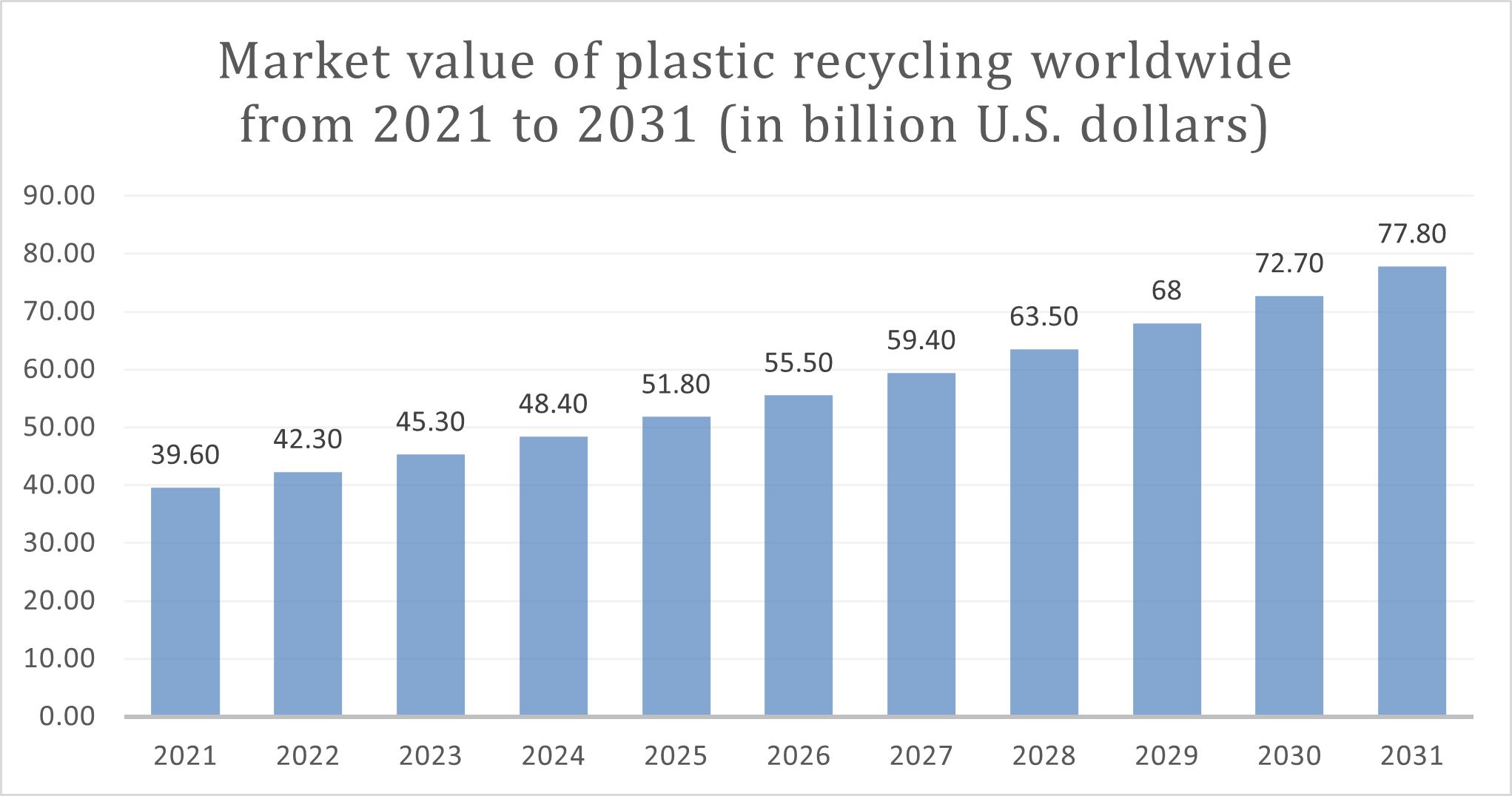
27 Feb Redefining Waste Management: Insights from a city in India on Plastic, E-Waste, and Hazardous Materials Management
The world appears to be drowning in waste as our modern and erudite globe generates a staggering amount of waste. From discarded electronics and single-use plastics to industrial by-products, our
throwaway culture is creating a growing environmental crisis. 1Currently, there are over 347 million metric tons (Mt) of unrecycled e-waste globally, with an average annual growth rate of 2 Mt. This makes e-waste one of the fastest-growing waste streams worldwide. 2According to the World Health Organization, e-waste has become the fastest-growing solid waste stream globally, with developed countries producing the highest amounts per capita.
On the other hand, observing the annual production of plastic may leave one astounded.
3Approximately, 400 million metric tons of plastic waste are generated globally each year, with China leading as the world’s largest plastic-producing country, accounting for a 32% share of global production. From packaging to clothing, plastic has become ubiquitous in our daily lives. But its convenience comes at a heavy cost. Plastic pollution not only suffocates our oceans and endangers marine life but also infiltrates our food chain, posing potential health hazards. 4Projections indicate that by 2050, the weight of plastic in our oceans will surpass that of fish.

Industrial operations generate a wide range of hazardous materials, such as solvents, pesticides, and heavy metals. Improper disposal of these wastes can contaminate air, water, and soil, posing serious health risks to communities and ecosystems. Leaks from poorly managed hazardous waste sites have been linked to cancers, birth defects, and other health problems.
The consequences of our current waste management practices are far-reaching and severe.
Environmental Damage: Landfills take up valuable land, leach harmful chemicals into the environment, and contribute to greenhouse gas emissions. Plastic pollution is disrupting marine ecosystems, leading to biodiversity loss, and impacting fisheries. Hazardous waste contamination can have long-lasting and devastating effects on ecosystems and human health. 5For instance, according to TRVST, in 2020, international landfill sites produced 68 million tons of methane gas. Methane emissions are more potent than carbon emissions, trapping 20 times more solar radiation than carbon dioxide. This makes the equivalent volume of methane gas emissions a more significant contributor to global warming.
Economic Costs: Inefficient waste management systems incur significant economic costs. Landfill maintenance, environmental clean-up efforts, and the loss of ecosystem services due to pollution take a heavy toll on society.
Public Health Risks: Improper waste disposal poses serious health risks for communities living near landfills and hazardous waste sites. Exposure to toxins can lead to various health problems, including cancer, respiratory issues, and developmental disorders.
But amidst this seemingly insurmountable challenge, there’s a glimmer of hope. Innovation and collaboration pave the way for better waste management solutions, offering us a chance to rewrite our relationship with waste and transition towards a more circular economy.

Regulating Waste Management: Key Recommendations
Product Design: Designing products for durability, repairability, and easy disassembly is crucial. Manufacturers need to move away from planned obsolescence and adopt lifecycle thinking along with the ability to use more recycled materials. 7For instance, Dell aims to utilize 100% recycled or renewable materials in its packaging, or alternatively, to incorporate reused packaging materials. Additionally, the company intends to ensure that over half of its product content is derived from recycled, renewable, or materials with reduced carbon emissions.
Extended Producer Responsibility (EPR): Holding manufacturers accountable for the entire lifecycle of their products, including end-of-life management, can incentivize sustainable design and encourage responsible waste disposal. 8In 2021, The Ellen MacArthur Foundation, a UK-based non-profit that promotes the circular economy, issued a statement supporting expanded producer responsibility (EPR) for the packaging industry. This statement is supported by more than 100 companies and associations that include the likes of Ferrero, H&M, Henkel, Inditex, L’Oréal, Mars, Nestlé, PepsiCo, Reckitt, The Coca-Cola Co., Unilever, and Walmart.
Improved Collection and Recycling Systems: Investing in efficient collection and recycling infrastructure is essential. This includes expanding access to recycling facilities, developing new recycling technologies, and promoting consumer education.
Significant global change begins at the local level, and it’s essential for municipalities to take the lead. One inspiring example comes from my hometown, Indore, located in the central part of India.9Indore, considered a second-tier city, boasts a population of approximately 3 million and produces over 1,115 metric tons of waste daily, encompassing e-waste, plastic, and hazardous materials.
10What’s truly remarkable is that the city has earned the prestigious title of the cleanest city in the country for an incredible seventh consecutive year!

11There are four pillars through which the city has consistently retained the title, a summarized description of how the city manages to achieve cleanliness is:
1. Innovation and Technology:
- GPS-tracked collection vehicles: Transparency and accountability in door-to-door waste collection.
- Three-bin system: Effective segregation at source with dedicated bins for wet, dry, and hazardous waste.
- Centralized hazardous waste treatment: Responsible disposal of harmful waste through incineration.
- 311 mobile app: Empowering citizens to report issues and track service requests.
2. Engaging Stakeholders:
- Universal door-to-door collection: 100% coverage of households and businesses fosters community participation.
- Collaborations: Partnerships with hospitals, hotels, and NGOs broaden reach and impact.
- Swachhata Samitis (Cleanliness Associations) and Nukkad Nataks (Street Plays): Citizen engagement through community groups drives behaviour change.
3. Prompt Action Plans:
- Rapid source segregation: Achieving 100% within a year through focused citizen campaigns.
- Efficient bulk collection: Dedicated system for semi-bulk and bulk waste generators. Responsible inert waste management: Landfilling inert waste at a designated facility. Quick response to service requests: The 311 app ensures prompt action on citizen concerns.
4. Awareness Campaigns:
- Multi-pronged approach: Traditional media (wall paintings) and digital channels (radio, social media) cater to diverse audiences.
- Monitoring and integration: IEC materials reinforce behaviour change during service monitoring.
- Cultural events as platforms: Festivals become avenues for spreading the message of cleanliness.
By seamlessly integrating these elements, the city achieved not only efficient hazardous waste management but also a collective sense of ownership and responsibility for cleanliness. This model serves as a valuable inspiration for other cities seeking to do more than just the usual to create a lasting impact.
In conclusion, amidst the challenges faced, there is room for optimism. Humanity is not resigned to succumb to the overwhelming tide of waste. Through the transition to a circular economy, there lies the opportunity to markedly diminish waste generation, optimize resource reuse, and forge a path toward a more sustainable future.
Blog by Chinmay Bindal,
Guest Blogger, Frost & Sullivan Institute
1 https://theroundup.org/global-e-waste-statistics/#:~:text=There%20is%20over%20347%20Mt,produce%20the%20most%20e-waste.
2https://www.who.int/news-room/fact-sheets/detail/electronic-waste-(e-waste)#:~:text=E- waste%20is%20the%20fastest,collected%20and%20recycled%20(2).
3 https://theroundup.org/plastic-waste-statistics/
4 https://phantomplastics.com/more-plastic-than-fish-in-the-ocean-by-2050-true-or-false/
5https://www.trvst.world/environment/environmental-impact-of- landfills/#:~:text=Climate%20impacts&text=In%202020%2C%20international%20landfill%20sites,significant%2 0contributor%20to%20global%20warming.
6 https://theroundup.org/plastic-waste-statistics/
7 https://www.dell.com/en-au/blog/circular-design-gives-e-waste-a-second-life/
8 https://www.recyclingtoday.com/news/ellen-macarthur-foundation-epr-
packaging/#:~:text=Companies%20endorsing%20the%20statement%20include,%2C%20Unilever%2C%20Veolia
